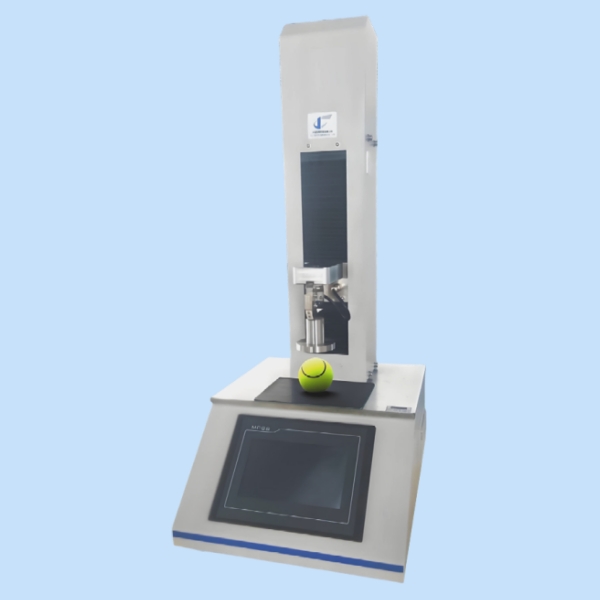1. What is the purpose of a Tennis Ball Compression Tester?
あ Tennis Ball Compression Tester measures how much a tennis ball deforms under a specific load. This ensures the ball’s firmness, bounce, and elasticity meet the official standards set by the International Tennis Federation (ITF) そして GBT 20045, guaranteeing consistent playing performance.
2. How is the tennis ball deformation test performed according to ITF TB 03/01?
The ITF test involves placing the tennis ball between two parallel platens of the Tennis Ball Deformation Tester, applying a controlled force along its diameter, and measuring both forward そして return deformation. Before testing, each ball undergoes nine pre-compressions to eliminate internal set, ensuring accurate and repeatable results.
3. What is the difference between the Tennis Ball Compression Tester and Tennis Ball Deformation Tester?
The terms are often used interchangeably. However, the Tennis Ball Compression Tester focuses on the applied force and resulting compression, while the Tennis Ball Deformation Tester emphasizes the change in ball diameter (deformation). Modern systems like Cell Instruments’ TBCT-01 measure both parameters simultaneously.
4. Which standards regulate tennis ball compression and deformation tests?
Two key standards define tennis ball quality: GBT 20045, which specifies Chinese national testing procedures, and the ITF Rules of Tennis with Test Method ITF TB 03/01, which detail deformation limits, pre-compression procedures, and ring gauge requirements for different ball types.
5. Why choose the TBCT-01 Tennis Ball Compression Tester from Cell Instruments?
の TBCT-01 is a high-precision tester designed in full compliance with GBT 20045 そして ITF TB 03/01. It offers automatic pre-compression, digital deformation recording, and advanced data analysis capabilities. Manufacturers, laboratories, and quality inspection agencies trust it for reliable, repeatable, and standard-compliant tennis ball performance evaluation.

